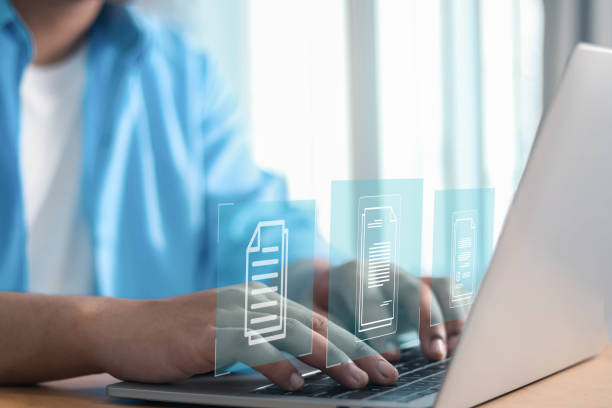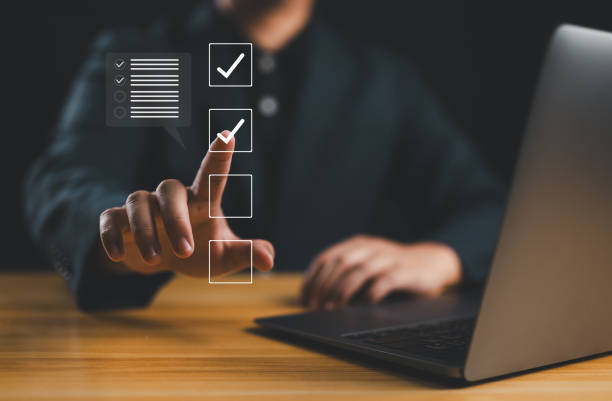### What is On-Page SEO and Why is it Important?

On-Page SEO refers to a set of actions taken within a website and on its pages to improve the site’s ranking in the search results of Google and other search engines.
These actions include optimizing content, HTML tags, site structure, loading speed, and more.
The importance of On-Page SEO lies in the fact that it helps search engines better understand the content of your site and display it to users who are looking for related information.
Without a strong On-Page SEO strategy, even the best content may get lost in a sea of web pages and go unnoticed.
A strong On-Page SEO strategy can significantly increase your site’s organic traffic, improve conversion rates, and ultimately help grow your business.
Investing in On-Page SEO is a long-term investment that will yield significant returns.
By optimizing your website for search engines, you can ensure that your site is consistently visible to your target audience.
To better understand On-Page SEO, we need to familiarize ourselves with its key concepts: #Keywords, #Title_Tags, #Meta_Descriptions, #URL_Structure, and #Quality_Content.
Each of these elements plays an important role in improving your site’s ranking.
Comprehensive SEO Guide can help you in this area.
Does your current website reflect your brand’s credibility as it should? Or does it scare away potential customers?
Rasawb, with years of experience in designing professional corporate websites, is your comprehensive solution.
✅ A modern, beautiful website tailored to your brand identity
✅ Significant increase in lead generation and new customers
⚡ Contact Rasawb now for a free consultation on corporate website design!
Keyword Research for On-Page SEO
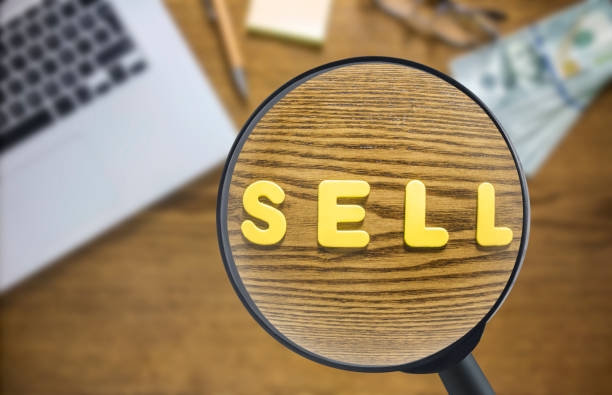
Keyword research is one of the most important steps in On-Page SEO.
The purpose of this research is to identify the words and phrases that users use to search for information related to your business.
By identifying these keywords, you can optimize your website content based on them to achieve a better ranking in search results.
There are several tools available for keyword research, including Google Keyword Planner, Ahrefs, Semrush, and Ubersuggest.
Each of these tools has its own unique features and capabilities, but their goal is to help you find the right keywords.
When choosing keywords, you should pay attention to a few things.
Firstly, the keywords should be relevant to your business.
Secondly, the keywords should have a decent search volume.
Thirdly, the keywords should have reasonable competition.
In other words, it shouldn’t be too difficult to rank for these keywords.
After selecting keywords, you should use them in your website content.
This can be done by using keywords in title tags, meta descriptions, headings, main text, and images.
Using keywords correctly in On-Page SEO is very important.
If you use keywords too much, Google may penalize your site.
Also, you should use keywords naturally and fluently in your text.
Excessive use of keywords can make your text appear unnatural and spammy.
Learn about keyword research.
Optimizing Titles and Meta Descriptions

Title Tags and Meta Descriptions are two important elements in On-Page SEO that are displayed in search results.
Titles are the main title of your page and help search engines understand the topic of your page.
Meta descriptions are summaries of the content of your page and help users decide whether they want to click on your link or not.
Optimizing titles and meta descriptions can significantly increase your site’s click-through rate (CTR) and, as a result, improve your site’s traffic.
To optimize titles, you should use keywords related to the topic of the page.
Also, the titles should be attractive and catchy to encourage users to click.
The length of the titles should also be appropriate.
Google usually shortens titles that are longer than 60 characters.
To optimize meta descriptions, you should provide an accurate and attractive summary of your page’s content.
Meta descriptions should also include keywords related to the topic of the page.
The length of the meta descriptions should also be appropriate.
Google usually shortens meta descriptions that are longer than 160 characters.
In the table below, you can see examples of optimized titles and meta descriptions:
| Page Title | Meta Description |
|---|---|
| Comprehensive Guide to On-Page SEO | In this article, learn about all aspects of On-Page SEO and improve your site’s ranking in Google. |
| Keyword Research Training | Learn how to find the right keywords for your business and increase your site’s traffic. |
Optimizing titles and meta descriptions is easy to do but can have a big impact on your site’s performance.
Take On-Page SEO seriously!
Optimizing URL Structure

URL structure is another important factor in On-Page SEO.
URLs should be short, descriptive, and contain keywords related to the topic of the page.
Long and complex URLs can be confusing for search engines and users.
Optimized URLs help search engines better understand the topic of your page and help users easily find the page they are looking for.
To optimize the URL structure, you should use keywords related to the topic of the page.
Also, URLs should be short and readable.
Avoid using uppercase letters, spaces, and special characters in URLs.
Use hyphens (-) instead of spaces.
For example, instead of using the following URL:https://www.example.com/page?id=123&title=Comprehensive+Guide+to+On-Page+SEO
Use the following URL:https://www.example.com/comprehensive-guide-to-on-page-seo
The second URL is shorter, more descriptive, and contains keywords related to the topic of the page.
You can also read URL Structure for a better understanding.
Remember that changing the URL structure after publishing pages can cause 404 errors.
To avoid this problem, you should use 301 redirects to redirect users and search engines to the new URLs.
On-Page SEO requires attention to detail.
Does your current corporate website present a worthy image of your brand and attract new customers?
If not, turn this challenge into an opportunity with Rasawb’s professional corporate website design services.
✅ Significantly improves your brand’s credibility and image.
✅ Paves the way for attracting new leads and customers.
⚡ Contact Rasawb now for free and expert advice!
Image Optimization
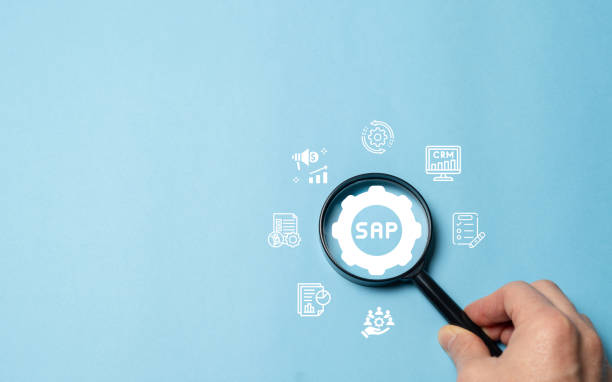
Images play an important role in the attractiveness and engagement of users with your site.
But unoptimized images can slow down your site’s loading speed and negatively impact your site’s ranking in search results.
Image optimization includes reducing image size, using appropriate formats, adding alternative text (Alt Text), and using descriptive file names.
To reduce image size, you can use online tools like TinyPNG or ImageOptim.
These tools reduce the size of images without reducing their quality.
For image formats, it is best to use JPEG format for images with a lot of detail and PNG format for images with simple graphics.
Alternative text (Alt Text) is text that helps search engines understand the content of the image.
Also, alternative text is displayed to users if the image does not load.
Alternative text should be descriptive and relevant to the topic of the image.
Don’t forget On-Page SEO with images! Image file names should also be descriptive and contain keywords related to the topic of the image.
For example, instead of using the file name “IMG_1234.jpg”, use the file name “comprehensive-guide-to-on-page-seo.jpg”.
Image optimization is not only important for search engines, but also for user experience (UX).
Optimized images increase site loading speed and make users have a better experience visiting your site.
Content Optimization
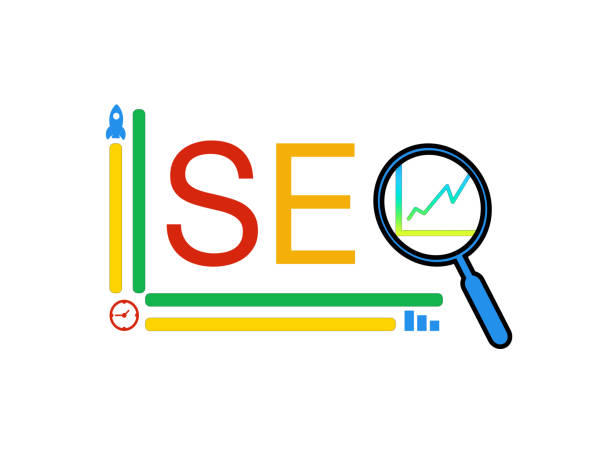
Content is king! This famous phrase in the world of On-Page SEO well illustrates the importance of content.
High-quality, valuable content that is relevant to the needs of users is one of the most important factors in ranking your site in search results.
Your content should answer users’ questions and needs, provide accurate and up-to-date information, and be free of spelling and grammatical errors.
To optimize content, you should use keywords related to the topic of the page.
But the use of keywords should not be excessive and unnatural.
Your content should be written for users, not for search engines.
Your content should have a proper structure.
Use headings and subheadings to divide the content.
Use short and readable paragraphs.
Use images, videos, and infographics to make the content more attractive.
Also, internal and external links play an important role in content optimization.
Internal links help users to easily navigate your site, and external links to reputable sites increase the credibility of your content.
Duplicate content is one of the biggest enemies of On-Page SEO.
Avoid publishing duplicate content on your site.
If you have to use duplicate content, use the Canonical tag to specify the original version of the content.
Good On-Page SEO starts with great content.
Internal Linking
![]()
Internal linking refers to the process of creating links between different pages of your site.
Internal links help search engines better understand the structure of your site and help users to easily navigate your site.
Internal linking can help improve your site’s ranking in search results, increase site traffic, and improve user experience.
For internal linking, you should use descriptive anchor texts that are relevant to the topic of the destination page.
Anchor text is the text that is given to the link.
Avoid using generic anchor texts like “click here”.
Internal links should point to relevant and valuable pages on your site.
Avoid linking to low-value or irrelevant pages.
The number of internal links on each page should be appropriate.
Linking too many pages can reduce the value of the links.
Internal linking should be done naturally and fluently.
Avoid forced and unnecessary linking.
Here is a table prepared for you
| Source Page | Destination Page | Anchor Text |
|---|---|---|
| Home Page | Comprehensive Guide to On-Page SEO | On-Page SEO |
| Keyword Research Training | Keyword Research Tools | Keyword Research Tools |
On-Page SEO requires patience.
Internal and external linking greatly helps to increase your site’s ranking.
Read about internal linking.
Site Loading Speed
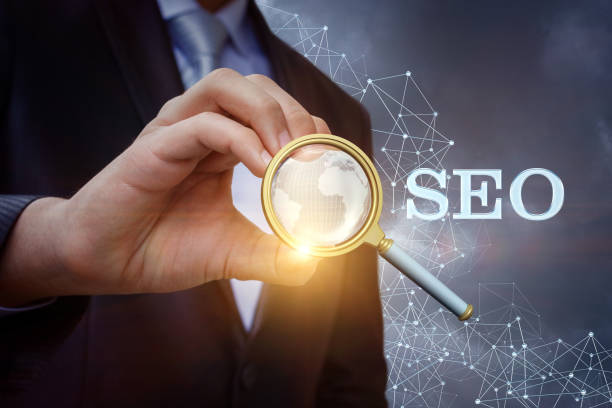
Site loading speed is an important factor in both On-Page SEO and user experience.
Users expect web pages to load in a few seconds.
If your site is slow, users will abandon visiting your site and go to other sites.
Site loading speed also affects your site’s ranking in search results.
Google gives a better ranking to sites that have a high loading speed.
To increase site loading speed, you can use various methods, including: optimizing images, enabling Gzip compression, using CDN, reducing the number of HTTP requests, and using caching.
Image optimization means reducing image size without reducing their quality.
Enabling Gzip compression means compressing your site’s files before sending them to the user’s browser.
Using CDN means using a network of servers to host your site’s files.
Reducing the number of HTTP requests means reducing the number of files that the browser needs to download to load the page.
Using caching means storing your site’s files in the user’s browser so that they load faster on subsequent visits.
To check your site’s loading speed, you can use various tools such as Google PageSpeed Insights, GTmetrix, and WebPageTest.
These tools provide you with accurate information about your site’s loading speed and suggest ways to improve it.
On-Page SEO means a better user experience!
Are you annoyed by losing customers who have visited your site to make a purchase?
Rasawb is your expert solution for having a successful online store.
✅ Significant increase in your online sales
✅ Creating trust and professional branding with customers⚡ Get free advice from Rasawb experts!
Responsive Design
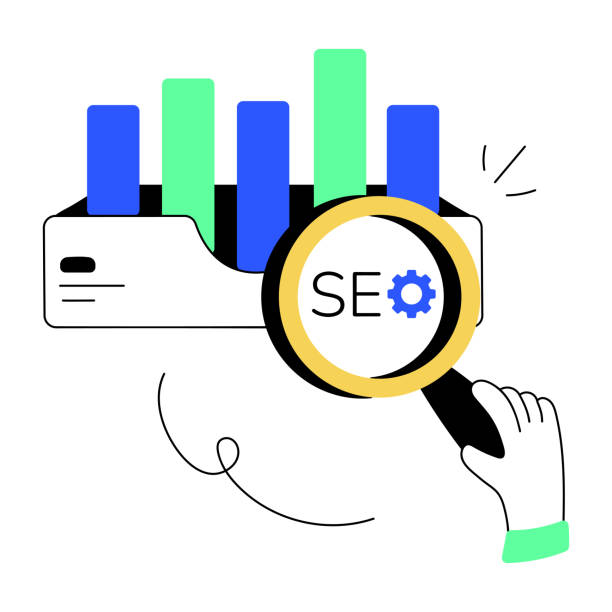
Responsive design means designing a website that automatically adapts to the screen size of different devices such as computers, tablets, and mobile phones.
Today, most users access the internet via mobile phones.
Therefore, having a website with responsive design is essential for success in On-Page SEO.
Google gives a better ranking to websites that have responsive design.
Responsive design is not only important for On-Page SEO, but also for user experience.
Users expect websites to display well on all devices and be easy to use.
To create a website with responsive design, you can use CSS frameworks such as Bootstrap or Foundation.
These frameworks provide you with the necessary tools and components to create a website with responsive design.
You can also use media queries in CSS to adjust the layout and appearance of the website based on the screen size of the device.
On-Page SEO and mobile-friendly site are two sides of the same coin.
If your website does not have responsive design, you should update it as soon as possible.
Ignoring responsive design can cause you to lose traffic and ranking in search results.
Implement responsive design on your site.
Update and Maintenance

On-Page SEO is an ongoing process and requires updates and maintenance.
Google’s algorithms are constantly changing.
Therefore, you should always be aware of the latest changes and adjust your On-Page SEO strategy accordingly.
Also, you should regularly update your site’s content, repair broken links, and check your site’s loading speed.
Updating content shows search engines that your site is active and provides new information.
Repairing broken links helps improve user experience and prevents your site from dropping in search results.
Checking site loading speed helps you identify potential problems and fix them.
Maintaining and updating On-Page SEO includes the following: continuously reviewing and improving keywords, analyzing competitors, reviewing and improving internal and external linking.
By doing these things, you can improve your site’s internal SEO.
Remember that On-Page SEO is a long-term investment.
With patience and continuous effort, you can improve your site’s ranking in search results and increase your site’s organic traffic.
On-Page SEO is a journey, not a destination!
Frequently Asked Questions
| Question | Answer |
|---|---|
| What is a Meta Title and why is it important in On-Page SEO? | The meta title is the most important element of on-page SEO, which is displayed at the top of the browser tab and in search results. This title helps search engines and users understand the main topic of the page and should include the main keyword. |
| What role does the Meta Description play in On-Page SEO? | The meta description is a short summary of the page’s content that appears below the title in search results. Although it does not directly affect ranking, its attractiveness can increase the click-through rate (CTR). |
| How should keywords be used in the page’s content? | Keywords should be used naturally and relevantly in strategic locations such as the title, headings, first paragraph, and body of the text. Avoid excessive keyword stuffing. |
| What is the importance of high-quality and comprehensive content in On-Page SEO? | High-quality, unique, informative, and comprehensive content that meets the needs of the user is of great importance. Search engines give higher rankings to content that creates real value. |
| What is the application of heading tags (H1-H6) in the structure of On-Page SEO? | Heading tags (H1, H2, H3, etc.) are used to structure content and specify the importance of different sections. H1 is the main title of the page and each page should only have one H1. Other tags are used for subheadings. |
| How should images be optimized to improve On-Page SEO? | To optimize images, use descriptive alternative text (Alt Text) that includes relevant keywords, reduce the image file size without loss of quality, and use meaningful and relevant file names. |
| What features does a friendly URL have for On-Page SEO? | A friendly URL should be short, readable, descriptive, include the main keywords, and without extra characters. The URL structure should be hierarchical and logical so that it is understandable for both users and search engines. |
| How does internal linking help On-Page SEO? | Internal linking, by connecting related pages to each other, helps users and search engine crawlers to better understand the structure of the site, transfer the authority of pages, and increase the user’s time on the site. |
| What is the impact of page loading speed on On-Page SEO? | High loading speed is critical for both user experience and SEO ranking. Slower pages may be ignored by search engines and lead to an increase in the bounce rate. |
| Why is mobile-friendliness so important in On-Page SEO? | Given the increasing number of searches via mobile devices, having a responsive and mobile-friendly site is essential for user experience and ranking in search results (Google’s mobile-first indexing). |
And other services of Rasa Web advertising agency in the field of advertising
Smart SEO: A fast and efficient solution to increase website traffic with a focus on attractive user interface design.
Smart Direct Marketing: Designed for businesses looking to increase sales through the use of real data.
Smart Social Media: An effective tool for online growth with the help of Google Ad management.
Smart Advertising Campaign: An exclusive service for customer behavior analysis growth based on optimizing key pages.
Smart Sales Automation: A creative platform to improve customer behavior analysis with an attractive user interface design.
And hundreds of other services in the field of internet advertising, advertising consulting and organizational solutions
Internet Advertising | Advertising Strategy | Advertorial
Resources
On-Page SEO Guide in Search Engine Journal
,Learn On-Page Website Optimization on Moz
,Best On-Page SEO Techniques from the Semrush Perspective
,On-Page Optimization: The Complete SEO Guide on Ahrefs
? Are you ready to advance your business in the digital world? The expert team of Rasawb Afarin, by providing comprehensive digital marketing services, including SEO-optimized website design, helps you to achieve your big goals and have a powerful presence on the web. Contact us today for a consultation and to start your business’s digital transformation.
📍 Tehran, Mirdamad Street, next to the Central Bank, South Kazerun Alley, Ramin Alley No. 6

